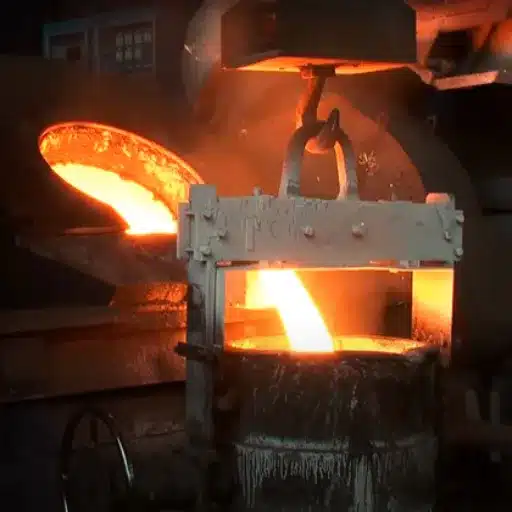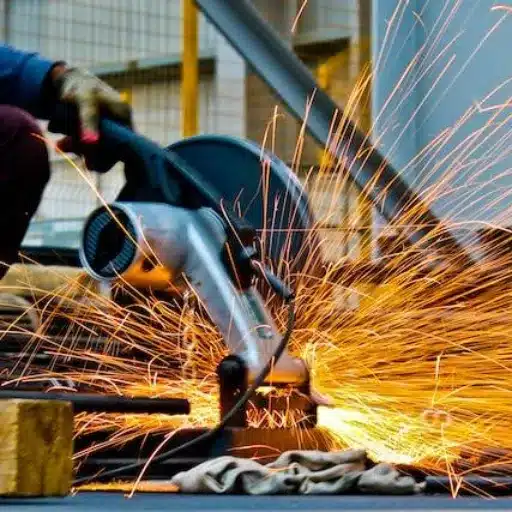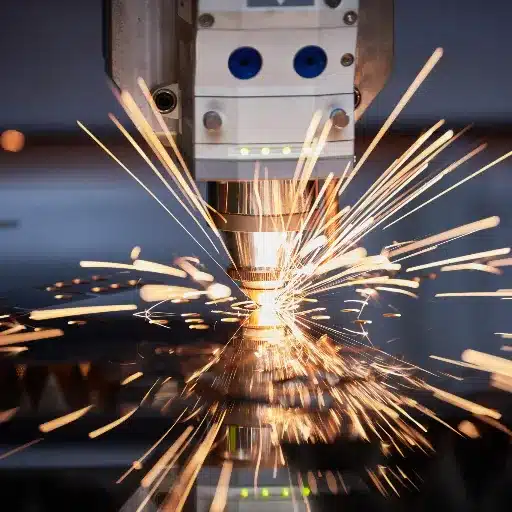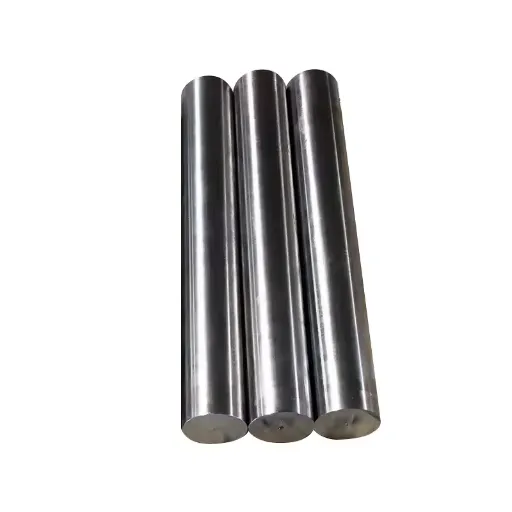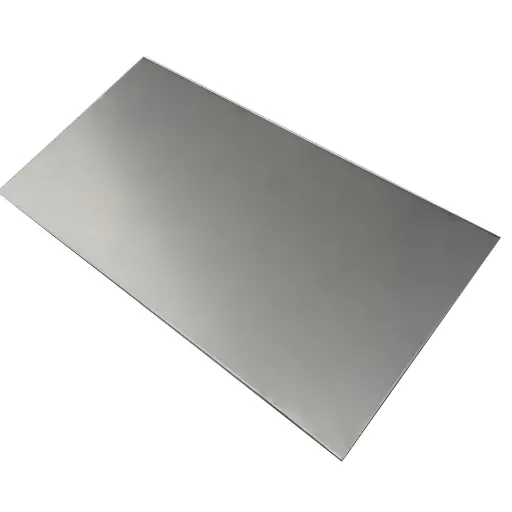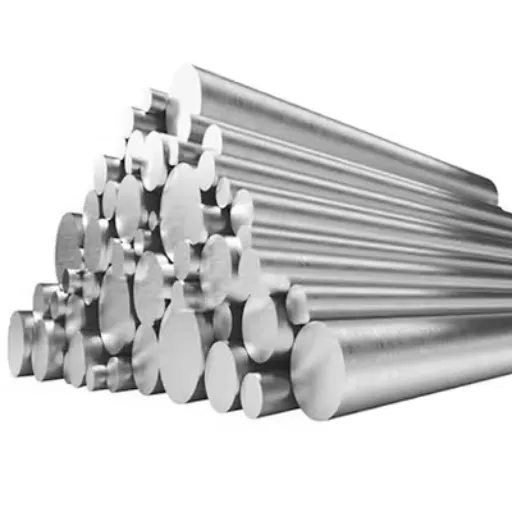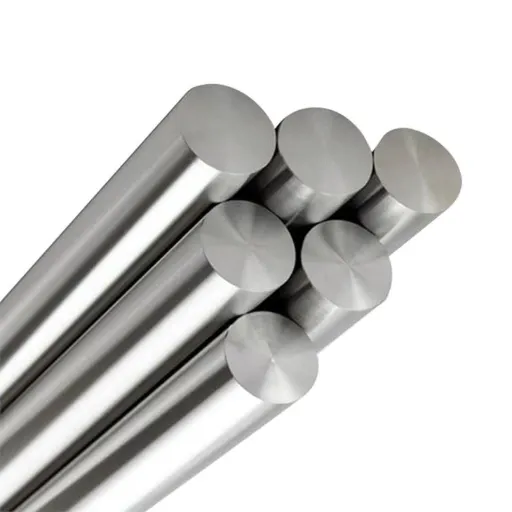It is important to know the melting point of metals throughout different industries such as construction, manufacturing, etc. The most popular metals include steel and mild steel, which are very useful due to their different properties like strength and reliability. What factors exactly control their performance when subjected to high temperatures? This guide takes you through the science and practical aspects of the melting points of steel and mild steel. If you are a metal professional or just someone curious about material properties, this article will provide you with the information you need to increase your knowledge and make better decisions.
Introduction to Mild Steel and its Applications
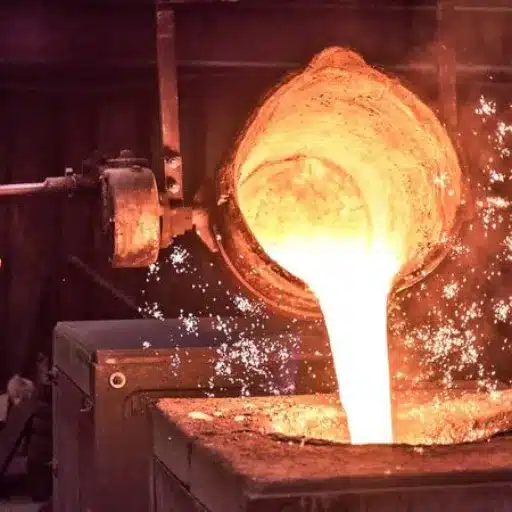
What is Mild Steel?
Mild steel, also referred to as low-carbon steel, is a category of carbon steel which has a very small amount of carbon, usually between 0.05% and 0.25% by weight. The presence of carbon in such low levels in mild steel makes it to be more ductile, malleable, and also easy to weld than high-carbon or other heattreated and alloyed steels. Its production mainly consists of iron and small amounts of other elements such as manganese, through which carbon, phosphorus, and sulfur may be present only as traces.
One of the most significant properties of mild steel is its strength and workability. It is also a highly versatile metal and so it is used in various industries for different purposes like building, making car parts, pipelines, machinery, and finally, tools for everyday use. The tensile strength of mild steel usually ranges between 400–550 MPa, and its melting point is very close to steel’s, about 1370°C to 1510°C (2500°F to 2750°F), depending on the exact iron and carbon composition.
Common Applications of Mild Steel
Construction and Infrastructure
Mild steel is the kingpin in the construction industry where it is used in the production of beams and other supporting structures as well as in the creation of reinforcement bars for buildings, bridges, and highways. The excellent tensile strength of mild steel ensures that the structures are strong enough while at the same time ductility enables shaping to be done easily. Industry data for the year 2022 indicated that the global construction sector consumed about 50% of the mild steel market demand.
Automotive Industry
The automobile industry uses mild steel to make the bodies of cars, chassis, and different parts of machines. The combination of low weight and high durability increases the performance and at the same time reduces the costs of making the vehicles. A study done in 2023 found that mild steel accounted for almost 35% of the materials used in an average car and this is because of its recycling and energy-saving production.
Pipelines and Storage Tanks
Mild steel has become a favorite for use in pipelines that are used to transport water, oil, and gas. Besides, it is used to make tanks for storing chemicals and crude oil. Its capacity to be welded along with the fact that it can withstand high pressures makes it the ideal material for such applications. The coating applied on mild steel pipes is also an important factor in preventing corrosion and thereby prolonging the life of the infrastructure.
Melting Point of Mild Steel
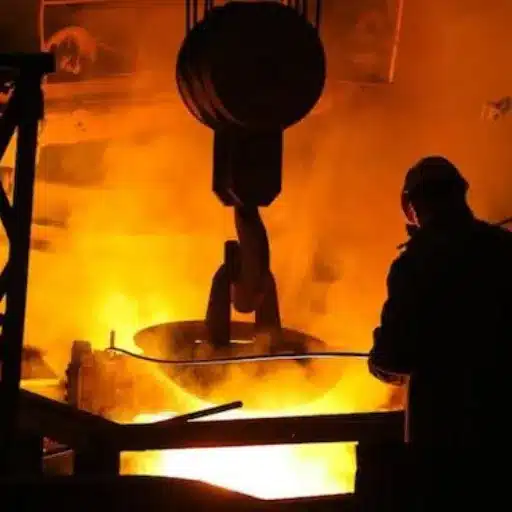
What is the Melting Point of Mild Steel?
Mild steel has a melting point of 2500°F to 2800°F (1370°C to 1538°C)
Mild steel, a metal that is often less known for its quality and more for its versatility and economy, has a melting point of 2500°F to 2800°F (1370°C to 1538°C) in the norm. This limit is mostly determined by the type and amount of carbon and other alloying elements used. The standard mild steel has 0.05% to 0.25% carbon and usually melts around this range lower end, as steels with higher carbon content undergo changes in heat properties and thus require more energy to melt them.
It is important to know the melting point in industry as it lets one know the temperature at which the material can be shaped or processed. Times, precision, safety, and performance, among other things, are based on this fact in engineering and fabrication. The melting point is also a major factor in comparing mild steel with other materials, which facilitates finding the right option for particular temperature-demanding applications.
Factors Influencing the Melting Point of Mild Steel
- Carbon Content:
Mild steel is known for its low carbon content, which usually amounts to about 0.05% to 0.25%, and it affects the melting point. The melting point is lowered when the content is increased because of the resulting brittleness. - Alloying Elements:
The melting behavior can be modified if the steel contains some impurities or additional alloying elements like manganese, phosphorus, or sulfur. Besides the fact that these are kept to a minimum in mild steel, their presence still very slightly affects the melting temperature. - Purity of the Material:
The purity of the raw materials used to manufacture mild steel is another factor that impacts the melting point. Impurities make atomic bonds less uniform and thus lead to small differences in the melting points.
Factors Affecting the Melting Point of Steel
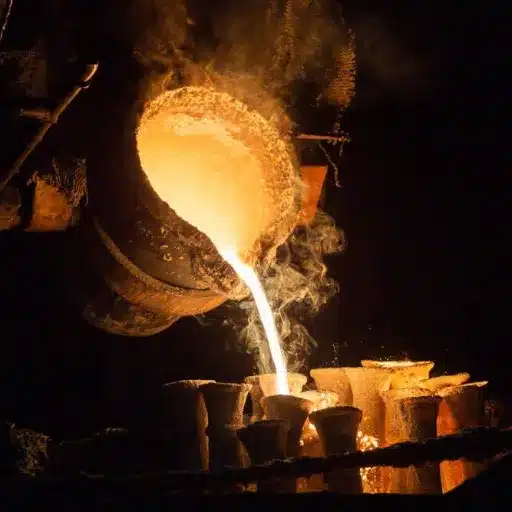
Composition and Alloying Elements
- Carbon:
More carbon means a lower melting point, in general. For example, high-carbon steels, with a carbon content of 0.6% to 1.25%, might have a lower melting range compared to mild steel. - Chromium:
While the melting point is raised slightly due to chromium, the latter’s main function in stainless steels is to make them less prone to corrosion. The melting point of stainless steels containing the high amount of 18% chromium, e.g., 304 stainless steel, lies within the range of 2550°F (1399°C) and 2650°F (1454°C). - Nickel:
Nickel makes alloys tougher and more ductile but at the same time, it helps to stabilize the austenitic structure, resulting in a slight reduction of the melting temperature of the alloy. - Manganese:
To enhance the hardenability and strength of the steel, manganese is usually added, however, the impact on the melting range of steel is quite small. Nevertheless, manganese is crucial for grain structure refinement.
Environmental Conditions During Melting
The environmental conditions during the melting of steel play an important part in the determination of the process’s efficiency and quality. Temperature, oxygen level, and the melting environment’s amount of impurities are factors that can have a big effect on the result. Melting of steel is usually done in controlled environments, such as electric arc furnaces or basic oxygen furnaces, which not only can reach very high temperatures but also can maintain a very precise control of the atmosphere.
Oxidation control is one of the major concerns during the melting process. The presence of too much oxygen in the furnace can result in the alloying elements being oxidized and thus leading to a drop in the quality of the steel produced. To avoid this, furnaces often use protective gases like argon or nitrogen or employ the flux-based covering method where an inert atmosphere is created around the melting zone.
Comparing the Melting Points of Different Metals
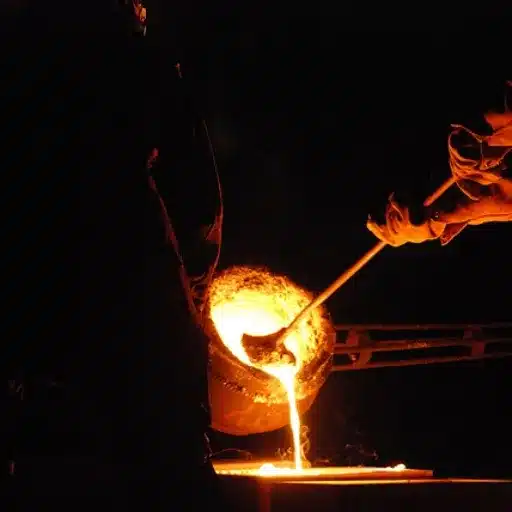
Melting Points of Common Metals
| Metal | Melting Point (°C) | Melting Point (°F) | Key Applications |
|---|---|---|---|
| Iron (Fe) | 1,538°C | 2,800°F | Iron’s melting point allows it to play an important role in almost all the industrial sectors dependent on the heatproof and strong materials. |
| Copper (Cu) | 1,085°C | 1,984°F | Copper’s awesome electrical conductivity makes it a moderate melting point such notion of the electrical and plumbing usage. |
| Aluminum (Al) | 660°C | 1,220°F | Aluminum with a low density is the primary metal for the construction and aircraft industries that where its low melting point is and used. |
| Gold (Au) | 1,064°C | 1,947°F | Gold’s melting point is the compromise between its easy manipulative and toughness, thus it is to be indulged in jewelry-making and electronics. |
| Silver (Ag) | 961.8°C | 1,763°F | Silver’s delicious luster and the melting point of the balance functionality and aesthetic uses of its electric properties. |
| Zinc (Zn) | 419.5°C | 787°F | The melting point of zinc being low, it finds the widest usage in galvanizing the steels or ferrous materials. |
Comparison of Mild Steel with Other Alloys
Strength and Hardness
Mild steel is a good tensile strength provider; however, it is weaker than the high-carbon steels and the stainless steels. High-carbon steel, for instance, contains as much as 2% carbon, which gives it great hardness and wear resistance, but it is not ductile. On the contrary, the addition of chromium and nickel to the steel increases its strength and its resistance to corrosion, thus making it applicable in harsher environments.
Corrosion Resistance
Mild steel, in contrast to stainless steel or galvanized steel, is completely devoid of any natural corrosion resistance. It usually rusts when exposed to moisture or air, and thus, it requires coatings, paints, or treatments such as galvanization for protection. Stainless steel, which contains a minimum of 10.5% chromium, develops a protective layer of chromium oxide that enables it to withstand corrosion in the majority of environments.
Practical Implications in Industry
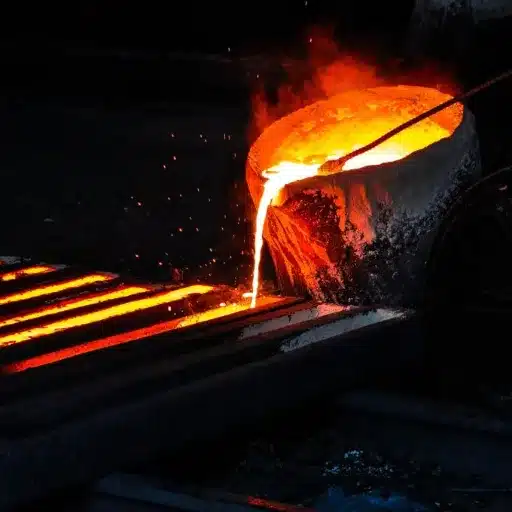
Applications in Manufacturing and Construction
Steel as one of the basic materials in manufacturing and construction is because of its range of uses, strength, and availability. Mild steel, with its tensile strength from 58.000 to 79.800 psi, takes part largely in the building of houses, skyscrapers, bridges, and industrial plants where the approaches of being cheap and flexibility are the most important. Its ductility and all ability to bond well make it perfect for putting in the ground and non-visible parts such as walls.
Stainless steel, which is frequently found in such conditions that require toughness and anti-oxidation, has a wide-ranging role in the building of present-day big tall buildings, chemical factories, and movement systems. As a concrete example, stainless steel constitutes roughly 88 million metric tons of global steel use per annum (as of 2023), mostly due to its property of being rust-free and decay-free. In the same vein, high-carbon steel is a favorite for its supreme hardness and thus, is extensively utilized in the production of tools that need to be strong and cuts instruments.
Safety Considerations During Steel Melting
The melting of steel is a process that is of great importance for industrial manufacturing but at the same time made up with substantial safety issues like extremely high temperatures, heavy machines, and chemical leaks. Therefore, the application of the most stringent safety protocols becomes necessary not only to shield the workers but also to keep the entire process running smoothly. Molten steel is a common sight in the steel industry, so, according to recent studies, it can reach temperatures of about 2500°F (1370°C), thus, thermal injuries rank the highest among the risks in steel plants. Provision of the right protective equipment such as heat-resisting gloves, face shields, and flame-retardant clothing is non-negotiable when it comes to lessening the risk of burns.
Fume and gas exposure is another rock of a problem during the melting process that has to be tackled. Emissions that are harmful to health, such as carbon monoxide (CO) and sulfur oxides (SOx), are released into the atmosphere as a result of steel being produced which negatively affects the respiratory system. The use of engineering controls, for instance, high-tech ventilation systems and constant air quality monitoring, can significantly cut down the exposure of workers to harmful air. Steel mills that have put in place sweeping ventilation measures report a 30% reduction in the respiratory problems among the workers.
Reference Sources
-
SS Alloy Steel Blog
- Title: Melting Point of Mild Steel: A Comprehensive Guide to Steel
- URL: https://ssalloy-steel.com/blog/melting-point-of-mild-steel/
- This source provides detailed insights into the melting point of mild steel and its variations based on carbon content.
-
Endura Steel
- Title: Key Insights and Must-Know Facts about Mild Steel
- URL: https://endura-steel.com/facts-about-mild-steel/
- This article discusses the melting point of mild steel and its implications for manufacturing and industrial use.
-
Industrial Metal Supply Blog
- Title: Melting Points for Metals | Metal Melting Temperatures
- URL: https://www.industrialmetalsupply.com/blog/melting-point-of-metals
- This blog provides a broader context on the melting points of various metals, including mild steel, and their applications.
Frequently Asked Questions (FAQs)
What is the melting point of mild steel?
The melting point of mild steel usually varies between 1370°C and 1520°C. The melting point range determined by the steel’s chemical makeup and processing may vary slightly around these values but generally aligns with the major character of this widely used steel.
How does the melting point of mild steel compare to other types of steel?
Mild steel has the lowest melting point when it is placed alongside other types of steels in terms of melting points. It is lower than the melting points of high carbon steel and tool steel. The reason for this might be that high carbon steel gets a higher melting point by its carbon content, which is the main factor influencing thermal properties.
What factors can influence the melting point of steel?
The factors affecting melting point of steel include carbon concentration, which is the most important factor, presence of alloying elements, and the manufacturing process. For example, steel is melted when the temperature exceeds its melting point, but if certain elements like chromium or nickel are added, then the melting point will be higher.

